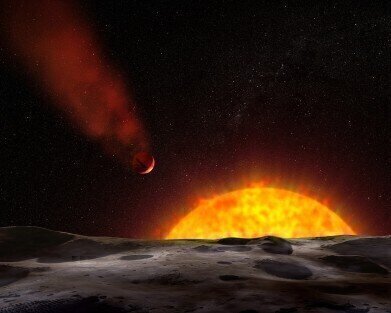News & Views
What Are Exoplanets?
Jun 30 2016
While the question of how many planets there are in the solar system is riddled with controversy, the International Astronomical Union asserts that the official figure is now eight. This is thanks to the demotion of Pluto, which came about when Caltech researcher Mike Brown discovered dwarf planet Eris in 2005, and spurred astronomers to rethink the definition of a planet.
Honing in on surrounding planets is all very well, but what about the planets that exist beyond the Earth’s solar system? Over the past two decades astronomers have tracked down thousands of other celestial objects, in a kaleidoscope of sizes and orbits. Some orbit around stars, which earns them a coveted place in the ‘exoplanet’ category. The term was officially recognised in the 1990s, with space scientists particularly interested in finding exoplanets that orbit in the ‘habitable zone’ of their respective stars.
Life beyond Planet Earth
As seen on Earth, orbiting in the habitable zone means a planet is far enough away from the sun to allow for liquid water oceans, a characteristic that’s critical for life. The definition of a ‘habitable zone’ relies on several different factors, including thermal equilibrium and the presence of a greenhouse effect.
Honing in on exoplanets
To date, astronomers have identified more than 1000 confirmed exoplanets using NASA’s Kepler space telescope alone. This is around half of the 2000 that are known to exist. Its findings are thanks to the innovative “transit” method, which measuring how much a star's light is dimmed when a planet passes in front of it.
There are far too many to name individually, however some have been identified as more ‘notable’ than their counterparts. As the first exoplanet found orbiting a star similar to the Sun, 51 Pegasi b (aka Dimidium) significantly expanded the scientific perspective on how planets form and evolve. In 1999 space scientists honed in on HD 209458 b, the first planet that offered scientists atmospheric insight, including temperature profile and the lack of clouds. Hailed as a ‘super-Earth,’ 55 Cancri e is visible to the human eye, with a lighting fast ‘year’ of just 17 hours and 41 minutes. Researchers theorise that the planet is carbon-rich, with a possible diamond core. In 2001 HD 80606 b attracted attention for its extreme orbit, while in 2011 astronomers discovered WASP-33b. As well as orbiting its star backwards, WASP-33b is armed with a "sunscreen" stratosphere that actively absorbs visible and UV light.
The solar system is endlessly intriguing to astronomers, however laboratory scientists also draw inspiration from planetary patterns. ‘Ultrafine Grinding with Laboratory Ball Mills’ introduces an orbit inspired nanotechnology technique that uses centrifugal and Coriolis forces to rapidly accelerate grinding balls. This creates ultra-high pulverisation energy which pulverises matter into fine particles.
Digital Edition
Lab Asia 31.2 April 2024
April 2024
In This Edition Chromatography Articles - Approaches to troubleshooting an SPE method for the analysis of oligonucleotides (pt i) - High-precision liquid flow processes demand full fluidic c...
View all digital editions
Events
Apr 22 2024 Marrakech, Morroco
Making Pharmaceuticals Exhibition & Conference
Apr 23 2024 Coventry, UK
Apr 23 2024 Kintex, South Korea
Apr 23 2024 Seoul, South Korea
Apr 24 2024 Jakarta, Indonesia




.jpg)













